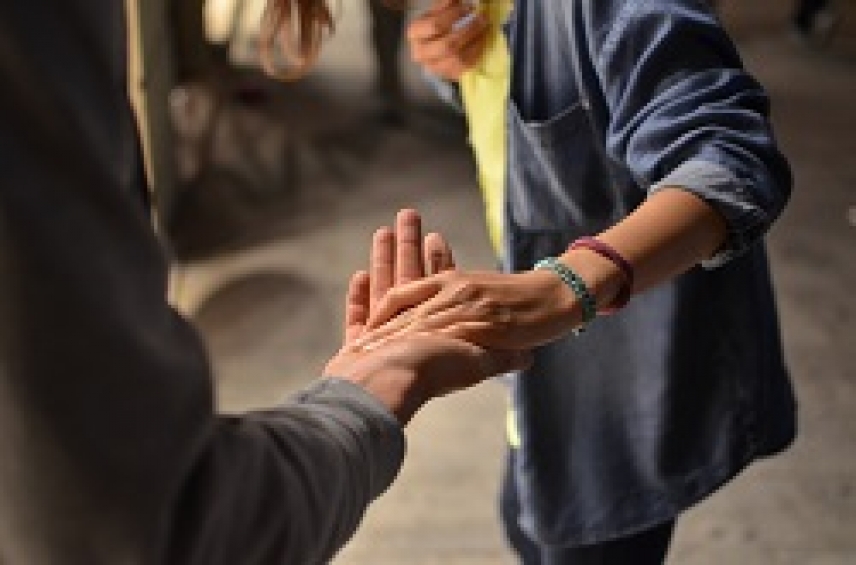Putting oneself in another person’s place is the best antidote against prejudice
Escrito porResearch performed by a team at the School of Education at the University of Cordoba shows an indirect relationship between empathy and the development of prejudices by means of personality and ideological attitudes
This is a subject that is hard to define and harder still to conceptually frame as the subject of a study, due to the overlap with other traits like emotional intelligence or kindness. According to some theories, it is roughly “putting yourself in another person’s shoes.” University of Cordoba Education Professor José Luis Álvarez Castillo defines empathy as “the ability to see things from another person’s perspective from a cognitive and emotional point of view.” That is to say, to imagine and understand other people’s beliefs and opinions and experience their feelings and emotions, understanding and feeling the world through their eyes.
A new model to prevent crime in businesses combines big data and socioeconomic theory
Escrito por UCC+iThe University of Cordoba has designed the basis of a model to prevent criminal behavior at businesses if, in accordance with the possibility provided for in the Penal Code, they wish to not be held legally responsible for perpetrating certain crimes or illegal activity committed by their executives or employees.
When the National High Court indicted Neymar and Barcelona Football Club for signing the player or when the tampering of Volkswagen engines was discovered there was already a regulation in Spanish law that promoted compliance programs, a crime prevention model. So it was clearly set in the Penal Code reform under Organic Law 1/2015; if companies do not have an efficient complicance program, it is likely that they will be liable for certain crimes committed by one of their employees. The implementation and application in these models, called compliances, assumes that the business at least attempts to prevent its employees from committing crimes related to business activity, such as fraud, corruption, environmental crimes, tax evasion and so on, as happened in the Neymar case and seems to have happened in the Volkswagen case.
Water users associations approve remote control watering systems
Escrito por UCC+iResearchers at the University of Cordoba assess the success or failure of installing remote control systems and data measuring in water users associations
From 2005 to 2010, in pursuing plans to modernize irrigation, the first telemetry and remote control watering systems were installed in Spain, in 260 water users associations. With a total area of around a million hectares, these systems began with the aim of facilitating life in the countryside, but have they really achieved their goal?
A new analysis system is able to identify pollutants from cosmetics in seawater
Escrito por UCC+iA University of Cordoba study, in partnership with the University of the Balearic Islands, uses carbon-coated titanium dioxide nanotubes to analyze samples affected by parabens from lotions and shampoos
A University of Cordoba research group has designed a method that detects the presence of pollutants in seawater in a faster and more efficient way and also at very low concentrations. Specifically, the team from Cordoba, in partnership with the University of the Balearic Islands, focused on several substances used as preservatives in soap, lotion and deodorant, which end up in the sea. Concerns about parabens and triclosan have been voiced from different sectors, and the European Commission has been monitoring these substances and limited their use. Parabens and triclosan keep bacteria and fungi from damaging shampoo and toothpaste, but they become a real problem once they get to the sea, where they affect the marine ecosystem. Identifying their presence contributes to the design of measures that correct their effects. This is the idea behind the work on the system designed by the University of Cordoba.
University of Cordoba researchers manage to reduce oxidative stress brought about by this well-known pesticide in mice via a selenium-enriched diet
Since it was first synthesized almost 150 years ago, the pesticide Dichlorodiphenyltrichloroethane, better known as DDT, has been widely used to fight illnesses caused by insects. Later, it was proven to not only kill off the species it targeted, but also wreaked havoc on the environment, on human beings and on other species in the ecosystem.
A new system is designed that improves the quality of frozen horse spers
Escrito por UCC+iThe method reduces ice crystals that form during cryopreservation and affect spermatozoon structure
Cryopreservation is a freezing method that stores spermatozoa to be used for reproduction. Although it is a widespread process, its main issue is the ice formation that occurs during said process, which ends up affecting sperm structure and quality. In order to diminish this harm, usually permeable cryoprotectants are used, which are substances that penetrate tissues and act inside cells in order to stop ice crystals from forming when temperatures go down.







